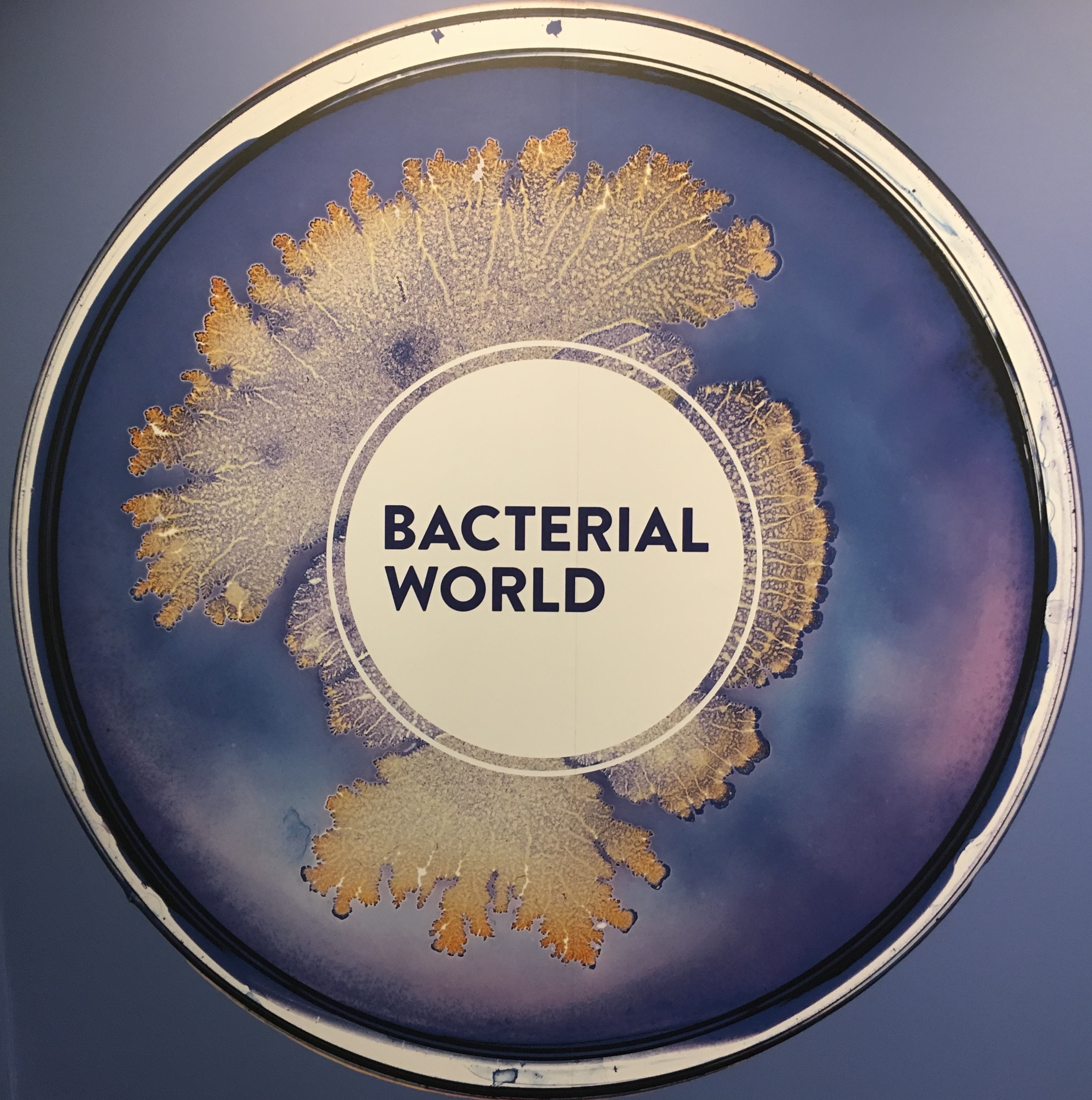
February 25, 2019, by cmay
‘Bacterial World’ at the University of Oxford Museum of Natural History
Bacteria usually go unnoticed by most of the public – yet they have been and still are an essential component of life. The Bacterial World exhibition at The Museum of Natural History in Oxford brings the smallest of organisms into the spotlight, if not by the numerous images and artworks of the bacteria then certainly by the fact that the giant inflatable E. coli suspended from the ceiling is pretty hard to miss.

This inflatable E.coli really is the largest strain we’ve seen yet…
Students from the Wellcome Trust Antimicrobials and Antimicrobial Resistance Doctoral Training Programme were invited to meet Professor Judith Armitage, Lead Research Scientist for the exhibition and President of the Microbiology Society, for a tour of the exhibition and a workshop about curating and communicating science to different public audiences with Dr Kelly Richards, Exhibition Officer at the Natural History Museum. With the landscape of science communication developing to provide diverse and exciting ways for the public to access and experience new research, students were given behind-the-scenes access to discuss everything from the logistics of putting the event together, to what Judith’s favourite bacteria was! By the way, having scientists agree on their “Top 10” bacteria was as controversial as you might expect!
Any attention that bacteria receive from the wider public is usually centred on the bad and the ugly: deadly pathogens, the fatal diseases they cause, and their resistance to antibiotics. What the Bacterial World exhibition does so brilliantly is to shift this focal point onto the bacteria themselves, and how pivotal they are to life on Earth. A story is told of the how bacteria were one of the first forms of life on our planet, how one type of bacteria produced oxygen to form the atmosphere as we know it, and how bacteria created complex cells that allowed for the evolution of all plant and animal life. The exhibition celebrates bacteria and their uses in scientific research, agriculture, and the food industry, amongst others. It encourages the public to delve into the microscopic world and learn with beautiful imagery, curious display cases, and exciting interactive games and technology. Effortlessly, what is sometimes a very abstract topic is made into an interesting and exciting subject for people of all ages and backgrounds. The sheer amount of work and effort that has gone into the exhibition is clear to see, even if the bacteria that it’s about usually aren’t!
The Bacterial World exhibition will be running until 28 May 2019 and you can find out further information about the exhibition here.
Ruby Persaud, Wellcome Trust DTP student
No comments yet, fill out a comment to be the first

Leave a Reply